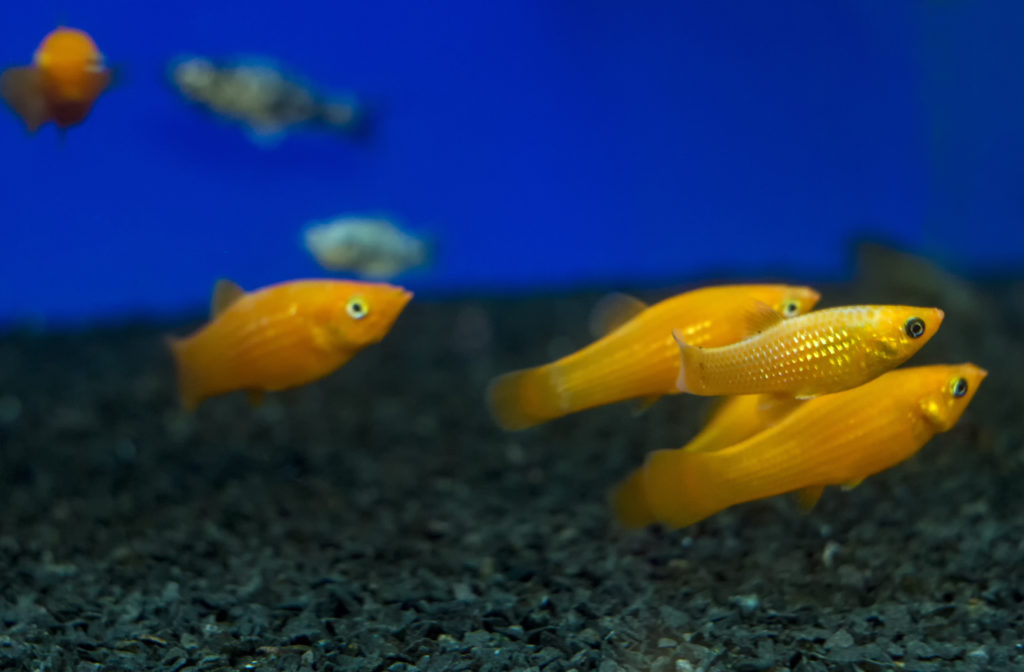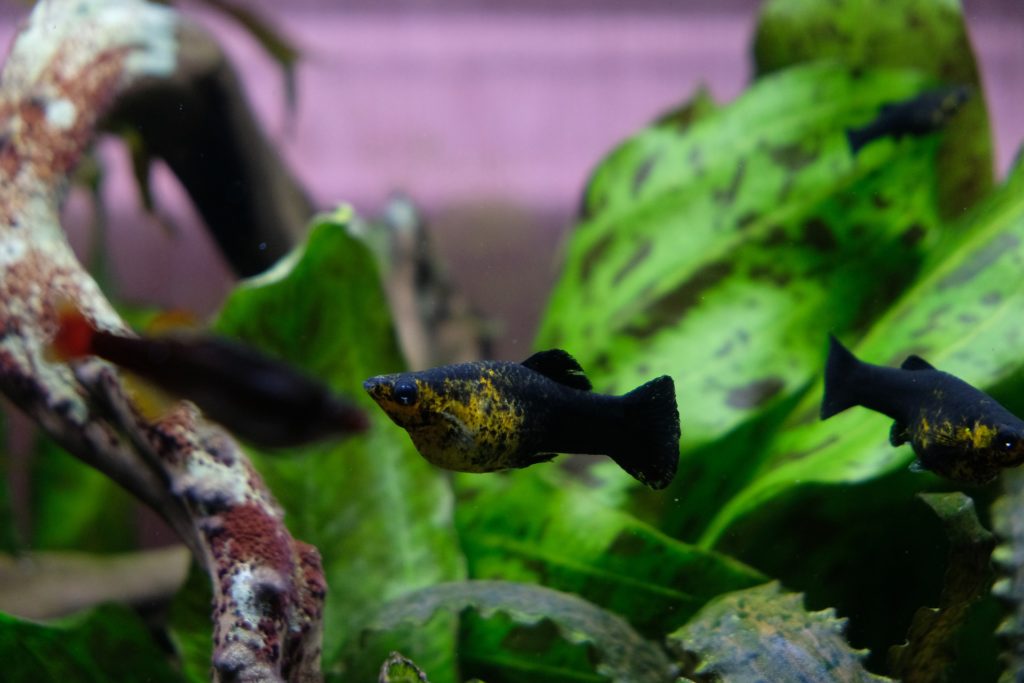Most people will have seen a molly fish at one point in their lives. If this sounds like you and you went ahead and adopted one, congrats. Poecilia latipinna, or molly, is a small tropical fish that originates from South America. Mollies are typically found in freshwater, but they also thrive in salty sea waters or marshes.
Unlike most fish, Mollies possess the unique ability to be able to exist in both saltwater and freshwater. This evolutionary trait and colorful body make them one of the most popular species among fish tanks worldwide.
All of these diverse varieties are fairly easy to care for, but if you want them to thrive, consider taking the time to learn and master all the unique details associated with each. Here are some tips to help you with molly fish care.
Different Types of Molly Fish

Just like every other fish species, mollies are hybridized in search of a better, more diverse specimen. There are a lot of different types of mollies available, including:
- Dalmatian Molly Fish
- Common Black Molly
- Common Black Molly
- Black Sailfin Molly
- Silver Sailfin Molly
- Gold Dust Molly
- Balloon Belly Molly Fish
- Marble Lyretail Molly
- Harlequin Sailfin Molly
Ideal Tank Size for Mollies
The ideal tank size for housing this type of fish depends on a few distinct factors, the most notable being the type of fish you plan to get. Short-finned mollies need a ten-gallon aquarium, but if you want your fish to live luxuriously, you should consider a larger twenty-gallon aquarium.
If you opt for the bigger sailfin molly, go for the twenty-gallon aquarium for their housing.
Another important factor is water quality. Bigger aquariums promote better water quality fluctuations. This is vital for mollies because they are very sensitive to abrupt changes in water quality.
Water Quality

While mollies are known for their adaptability, you should strive for optimal living conditions. One easy way to do this is to simply mimic their original habitat by setting the water temperature anywhere between 70-85⁰ Fahrenheit. It’s highly recommended to keep the water temperature consistent to avoid causing your molly undesired stress.
Mollies can thrive in different environments; however, expert aquarists recommend heavier water filtering for mollies. When it comes to changing the water, the prevailing recommendation is to change one-third of the water weekly. Make sure to change the water steadily to keep the process as stable as possible.
Type of Water Suitable for Molly
Although mollies are mostly freshwater species, you can find diverse schools thriving in salty waters. So should you add salt to your tank or not when housing mollies? The answer is not that simple; it depends on the particular kind that’s being housed. Most mollies will thrive in freshwater tanks with no added salt. With this in mind, consider confirming with your pet store whether or not the salt should be added.
Feeding Your Fish
Mollies are omnivores. You should feed them a mixed diet with quality flake food and vegetables, such as algae and plants. As far as live food, Mollies love brine shrimp, daphnia, and bloodworms. Frozen food is also great for mollies! You should feed your molly two or three times a day. Like every other fish species, don’t overfeed; mollies often eat more than they need. Simply feed as much food as they can consume in three to five minutes. Doing this will help your molly stay healthy and will considerably improve your water quality as well.
Breeding
Unlike many other tropical freshwater fish, mollies are live-bearers, meaning they give birth to live newborns rather than laying eggs. If you plan on breeding your mollies, the best reproduction ratio is one male molly per three or four females.
Because males are so infamous for always chasing females and mating with them, having more females in the tank helps lessen the pressure by spreading the mating attempts between multiple females. When breeding, mollies prefer warmer water; 80-82⁰ Fahrenheit is the ideal water temperature. Because they are heavy breeders, female mollies can give birth to anywhere from 10 fries to 50 or more.
After birth, keep the younglings in a separate fishbowl up until they reach the size where other fish cannot eat them. Feed them more than five times a day with grounded flakes.
Tank Mates

Mollies are usually peaceful fish. They live in schools, and many have had no trouble with keeping them in community tanks. However, others prefer to keep molly species in a single aquarium in case they become hostile toward other fish. Some owners report that mollies often tend to bite the fins of other fish, and males get very aggressive when kept apart from their females.
Takeaway
Mollies are a very popular species of fish. Most mollies, among with Betta Fish and Koi Fish, are tough and easy to care for, making them great for beginner aquarists. They fit well in community aquariums and can thrive both in fresh or saltwater. If kept in a healthy ecosystem, mollies can thrive and live up to 5 years.
You will rarely come across a fish shop that doesn’t carry mollies – they are among the most popular fish on the planet. Common species can be purchased for $3-5 per fish, though larger, rarer species cost more.
